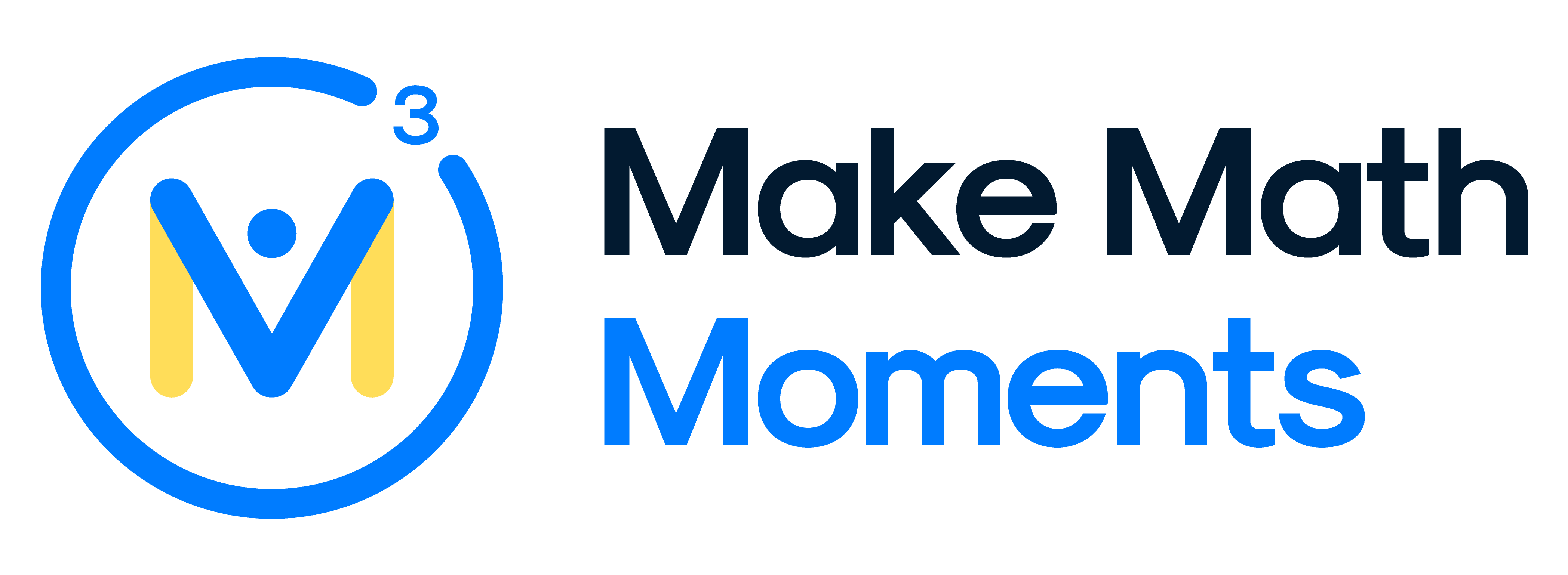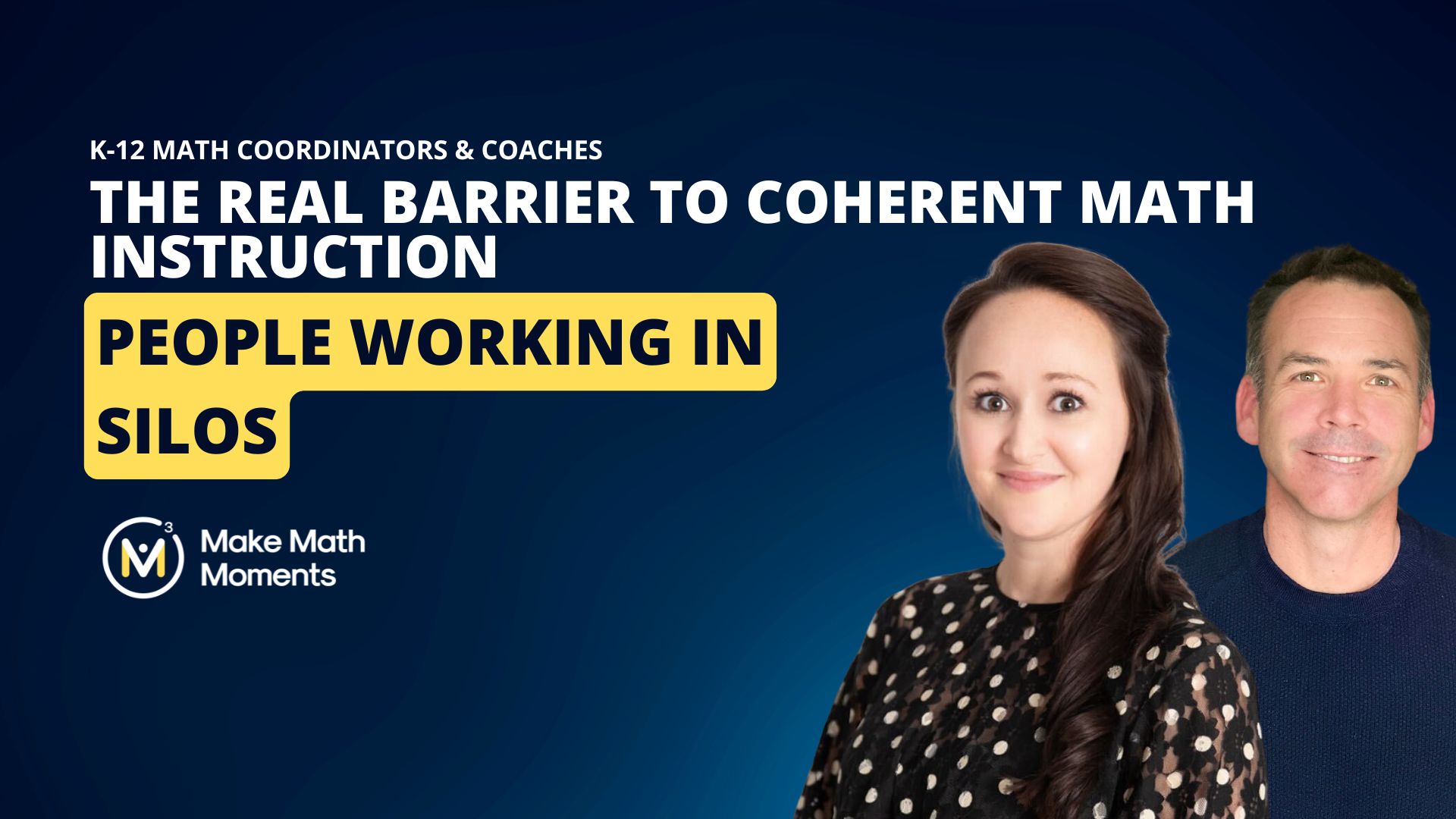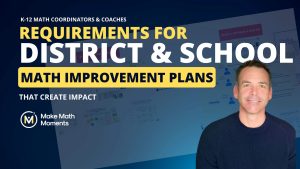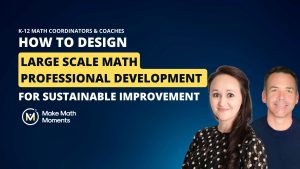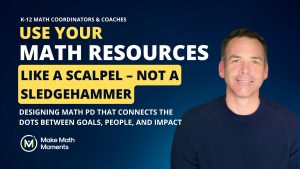When you sit with Melissa and Jenifer from a large school district in Missouri, it doesn’t take long to understand why their district has become such a powerful example of what it looks like when “bridges” aren’t roles on a chart, but people in motion.
Nothing in their story centers on tools or templates. It always comes back to people—how they show up, how they talk to each other, how they create coherence in a system big enough to fragment at a moment’s notice.
Several years ago, they found themselves in a familiar place: everyone was trying their best, but the work felt scattered. One building was emphasizing “math talk,” another leaned on pacing guides, a third was holding tight to traditional practices because they weren’t sure what mattered most.
Teachers were hearing different messages depending on which coach walked through their door. High-quality instruction wasn’t absent—it was inconsistent.
Melissa describes that period with a kind of gentle bluntness that only a reflective leader can offer.
“We weren’t short on effort,” she said.
“We were short on coherence.”
And this is where their transformation began—not with a new initiative, not with a new tool, but with a belief that people had to become the connective tissue of the system.
The first thing they did was something deceptively simple: they aligned their own voices. The math department chairs, instructional specialists, mentor teachers, and coaches began spending real time together—not to design programs, but to clarify meaning.
What did they mean by “fluency”?
By “reasoning”?
By “student-centered”?
They knew that if they couldn’t explain it consistently, teachers didn’t stand a chance. These meetings became the heartbeat of the work, a place where leaders translated big ideas into shared language.
When those leaders stepped into schools, they didn’t arrive as evaluators or compliance-checkers.
They arrived as bridges—people who could sit beside teachers or principals and help them see the district’s objectives in practice.
Melissa described watching a coach help a team understand fluency not as speed, but as flexibility. The coach listened first, paraphrased teachers’ understanding, and then invited them to look at student work through a different lens. The coach is perfectly acting as a bridge – a conduit for coherence across the system on the district objective(s).
Across the district, the same pattern played out.
Coaches facilitated PLCs by beginning with stories rather than mandates.
Department chairs built agendas around the district’s objectives, not around administrative updates.
Mentor teachers invited colleagues into their classrooms to see practices in action, not perfected, but alive and evolving.
Every meeting, every conversation, every shared artifact became another thread in the net that kept the system coherent.
The tools Jenifer and Melissa used—the rubrics, the continua, the reflection protocols—didn’t create this culture; they emerged from it. They were shaped by leaders who already believed that clarity is a gift and that teachers deserve more than vague expectations. The reason this team’s rubrics feel so authentic is because they were born from the experiences of teachers, written in language that sounds like the people who use them, and stewarded by leaders who see them as mirrors—not microscopes.
As their work matured, something profound happened: the system stopped relying on a single central voice.
Whether you asked a principal, a coach, or a department chair about the district’s focus, you heard the same story. Not because they were reciting a script, but because they had lived the conversations that built the understanding.
This is the hallmark of a district with real bridges—not isolated champions, but a community of dedicated educators who reinforce and interpret the vision in ways that make sense to teachers.
Most striking is how leaders in this district treat instructional improvement as a human endeavor, not a technical one.
When teachers struggled, the Bridges didn’t “fix” them; they walked with them.
When principals had questions, the Bridges didn’t hand them a checklist; they helped them listen to voices.
When district leaders introduced new continua, they didn’t roll them out—they invited teachers to shape them.
Jenifer and Melissa’s story reads like a masterclass in distributed instructional leadership. Not because someone designed an elegant system, but because the right people were empowered to become its connectors. They embody the central thesis of why you need Bridges: objectives don’t change classrooms—people do.
And in this school district, those people are everywhere. They aren’t a department. They aren’t a committee. They’re a culture.
They’re the bridges.
How To Identify Math Bridges In Your School System
At this stage of the flywheel you are not training Bridges yet — that comes later, once Key You don’t need a full strategic plan to begin strengthening coherence in your math program. If you want to get a sense of how the team described above built a network of people who carried clarity into classrooms, here are a few simple moves you can start exploring right away.
These aren’t long-term commitments — just high-leverage ways to notice where coherence already exists in your system and where it needs support.
Step 1: Name the Roles That Will Function as Bridges For Math Support
List positions in your district or school that influence instruction. Your list might include:
- Principals and assistant principals
- Instructional coaches and coordinators
- Department heads of mathematics
- Master math teachers or lead teachers
- Teacher-leaders
- A district math leadership team
At this stage, you are NOT selecting individuals — you are identifying the roles that should function as bridges.
Step 2: Draft a Clear Description of the Bridge Role For Mathematics
This is foundational. Before you choose people, you must define the role they will eventually play.
Create a short description (a half-page is plenty) that clarifies:
- Purpose: Why Bridges matter in moving long-term objectives into schools and classrooms
- Primary responsibilities: e.g., helping teachers interpret math objectives, facilitating PLC structures, reinforcing system priorities
- What success looks like for a Bridge: not outcomes yet — but clarity, consistency, communication
This step prevents future confusion. When you later select individuals, both you and they will already know the expectations.
Step 3: Identify Possible Individuals Without Committing Yet
Now list possible Bridges by name.
Ask:
- Who do teachers already look to for guidance?
- Who is trusted?
- Who has influence beyond their role?
- Who demonstrates a growth mindset and openness to change?
Important: You are not selecting or announcing anything yet. At this stage, you are simply building awareness of who might serve in these roles.
Step 4: Identify Current Gaps in Coverage in Your Math Bridges
Once you have a tentative list of potential Bridges, consider:
- Are some schools or grade bands missing?
- Do we need more classroom-based leaders?
- Are principals variably positioned to serve as Bridges?
This shows you where future support structures or recruitment efforts may be needed.
Step 5: Make a Parking Lot for Future Math PD Needs
As you reflect on potential Bridges, you’ll naturally think of areas where they may need support.
Instead of building a plan right now, simply jot down ideas like:
- deeper math content knowledge
- protocols for PLCs
- tools for observing student thinking
- facilitation strategies
Think of it as a “future ideas parking lot,” not a to-do list.
You don’t need a new initiative to bring more coherence into your system. You just need people — the right people — carrying the same message, modeling the same thinking, and helping others see what the work looks like in practice.
The team described above didn’t start with tools. They started with people.
And your district can do the same.
Want to Learn More?
At Make Math Moments, we help districts build systems for sustainable improvement through our Math Improvement Flywheel—a four-stage process that supports leaders in designing vision, aligning systems, building capacity, and inspiring growth.
If your district is ready to move beyond short-term fixes and create bridges in mathematics learning, we’d love to partner with you.👉 Learn more about the District/School Improvement Program.
